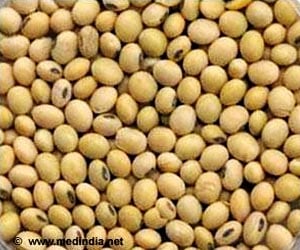Mechanical testing and machine learning to make plant-based meats more similar to animal products.

The mechanical and sensory signature of plant-based and animal meat
Go to source).
Such a method could speed up the development of new and better plant-based meats. The team also found that some plant-based products are already nailing the texture of the meats they’re mimicking.
‘Plant-based meat is an environmentally friendly and healthy alternative to animal meat. #protein #plantbasedmeat #medindia’





Advertisement
Plant-Based Meats for Better Health
“We were surprised to find that today’s plant-based products can reproduce the whole texture spectrum of animal meats,” said Ellen Kuhl, professor of mechanical engineering and senior author of the study. Meat substitutes have come a long way from when tofu was the only option, she added.Industrial animal agriculture contributes to climate change, pollution, habitat loss, and antibiotic resistance. That burden on the planet can be eased by swapping animal proteins for plant proteins in diets. One study estimated that plant-based meats, on average, have half the environmental impact of animal meat. But many meat eaters are reluctant to change; only about a third of Americans in one survey indicated they were “very likely” or “extremely likely” to buy plant-based alternatives.
“People love meat,” said Skyler St. Pierre, a PhD student in mechanical engineering and lead author of the paper. “If we want to convince the hardcore meat eaters that alternatives are worth trying, the closer we can mimic animal meat with plant-based products, the more likely people might be open to trying something new.”
To successfully mimic animal meat, food scientists analyze the texture of plant-based meat products. Unfortunately, traditional food testing methods are not standardized and the results are rarely made available to science and the public, said St. Pierre. This makes it harder for scientists to collaborate and create new recipes for alternatives.
Advertisement
Using AI to Perfect Plant-Based Meat Texture
The research grew out of a class project by St. Pierre. Looking for affordable materials to use in mechanical tests, he turned to hot dogs and tofu. Over the summer of 2023, undergraduate researchers joined in to test the foods and learn how engineers depict material responses to stress, loading, and stretching.Realizing how this work could aid the development of plant-based meats, the Stanford team debuted a three-dimensional food test. They put eight products to the test: animal and plant-based hot dogs, animal and plant-based sausage, animal and plant-based turkey, and extra firm and firm tofu. They mounted bits of meat into a machine that pulled, pushed, and sheared on the samples. “These three loading modes represent what you do when you chew,” said Kuhl, who is also the Catherine Holman Johnson Director of Stanford Bio-X and the Walter B. Reinhold Professor in the School of Engineering.
Then, they used machine learning to process the data from these tests: They designed a new type of neural network that takes the raw data from the tests and produces equations that explain the properties of the meats.
To see if these equations can explain the perception of texture, the team carried out a test survey. The testers – who first completed surveys on their openness to new foods and their attachment to meat – ate samples of the eight products and rated them on a 5-point scale for 12 categories: soft, hard, brittle, chewy, gummy, viscous, springy, sticky, fibrous, fatty, moist, and meat-like.
Plant-Based Hot Dogs and Sausages
In the mechanical testing, the plant-based hot dog and sausage behaved very similarly in the pulling, pushing, and shear tests to their animal counterparts, and showed similar stiffnesses. Meanwhile, the plant-based turkey was twice as stiff as animal turkey, and the tofu was much softer than the meat products. Strikingly, the human testers also ranked the stiffness of the hot dogs and sausages very similarly to the mechanical tests. “What’s cool is that the ranking of the people was almost identical to the ranking of the machine,” said Kuhl. “That’s great because now we can use the machine to have a quantitative, very reproducible test.”The findings suggest that new, data-driven methods hold promise for speeding up the process of developing tasty plant-based products. “Instead of using a trial-and-error approach to improve the texture of plant-based meat, we could envision using generative artificial intelligence to scientifically generate recipes for plant-based meat products with precisely desired properties,” the authors wrote in the paper.
But artificial intelligence recipe development, like other AIs, needs lots of data. That’s why the team is sharing their data online, making it open for other researchers to view and add to. “Historically, some researchers, and especially companies, don’t share their data and that’s a really big barrier to innovation,” said St. Pierre. Without sharing information and working together, he added, “How are we going to come up with a steak mimic together?”
The team is continuing to test foods and build a public database. This summer, St. Pierre oversaw undergraduates testing veggie and meat deli slices. The researchers also plan to test engineered fungi developed by Vayu Hill-Maini, who recently joined Stanford as an assistant professor of bioengineering. “If anybody has an artificial or a plant-based meat they want to test,” said Kuhl, “we’re so happy to test it to see how it stacks up.”
Reference:
- The mechanical and sensory signature of plant-based and animal meat - (https://www.nature.com/articles/s41538-024-00330-6)
Source-Eurekalert











